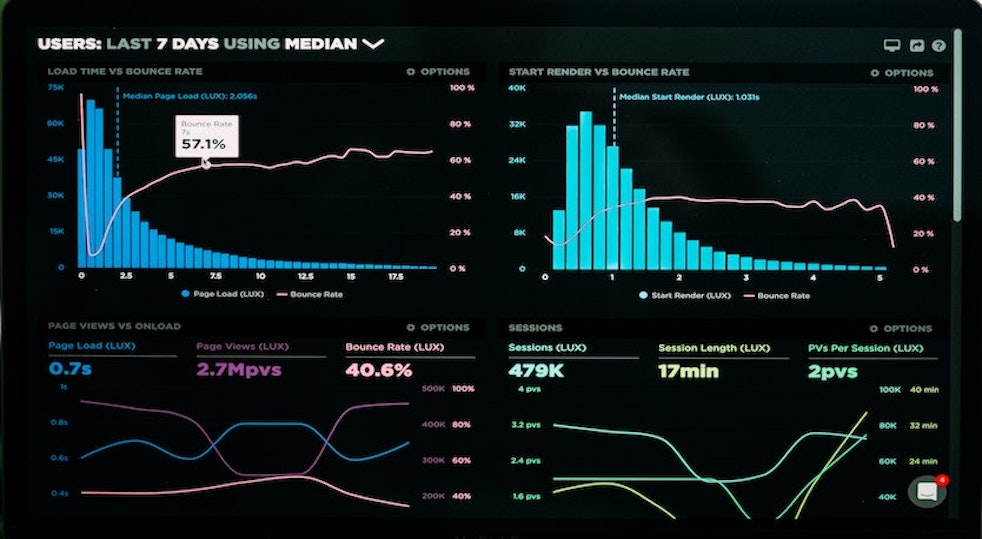To complement our series of QuickReads covering measurement, we will now explore the various data…

ChangeWise Quick Read: What is WILO/DILO?
In this Quick Read, we take a look at WILO/DILO. We will offer a high-level overview of what it is, how to apply it effectively in your organisation and how it can help to drive Continuous Improvement.
What is WILO/DILO?
WILO/DILO stands for Week In the Life Of and Day In the Life Of and acts as a useful analysis technique for understanding how effective your work activities are, and what people do as part of their everyday work routine. It is a documented diary of the ideal working day and can also provide an effective time management self-assessment technique.
Tell me more…..
The main objective is to understand what a manager’s day currently consists of and agree which activities/tasks are value-add and non-value-add. This information is then used to agree what an ideal manager’s day would look like in order to achieve that ideal.
What are the key benefits?
There are many benefits in employing the WILO/DILO technique within your organisation, including:
- Ensuring a manager’s core activities are focused on the right activities
- Identifying inefficiencies
- Removing waste from the process
- Helping us to understand how we can redesign the working day to support a Continuous Improvement culture
How will I know my WILO/DILO analysis has been successful?
It is important to note that WILO/DILO will not transform a department overnight, the change takes time and commitment. However, the ultimate outcome is when we see a manager coaching, walking the floor or involved in problem solving – NOT sitting at their desk.
‼️ Important Point! What a leader does throughout their day is crucial to the effectiveness of a Lean working environment.
I like it! Any tips for implementing WILO/DILO in my team?
Of course! There are 5 simple steps.
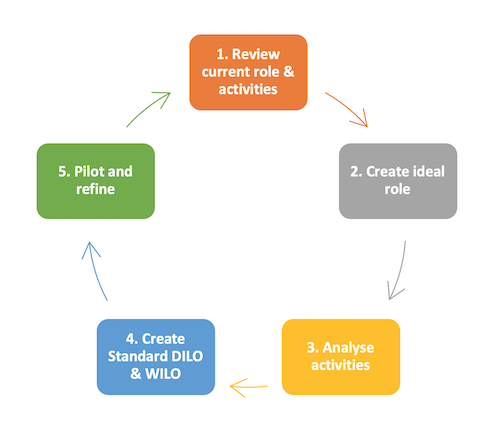
Let’s take a look at each step in more detail….
1: Review Current Role & Activities
The first step is to capture all of the manager’s current activities using a tracker. Once we have a view of these tasks, we can analyse the data to understand how the manager’s time is being used (Pareto is a great tool for this – take a look at our Quick Read ‘Pareto Analysis’ for some useful tips).
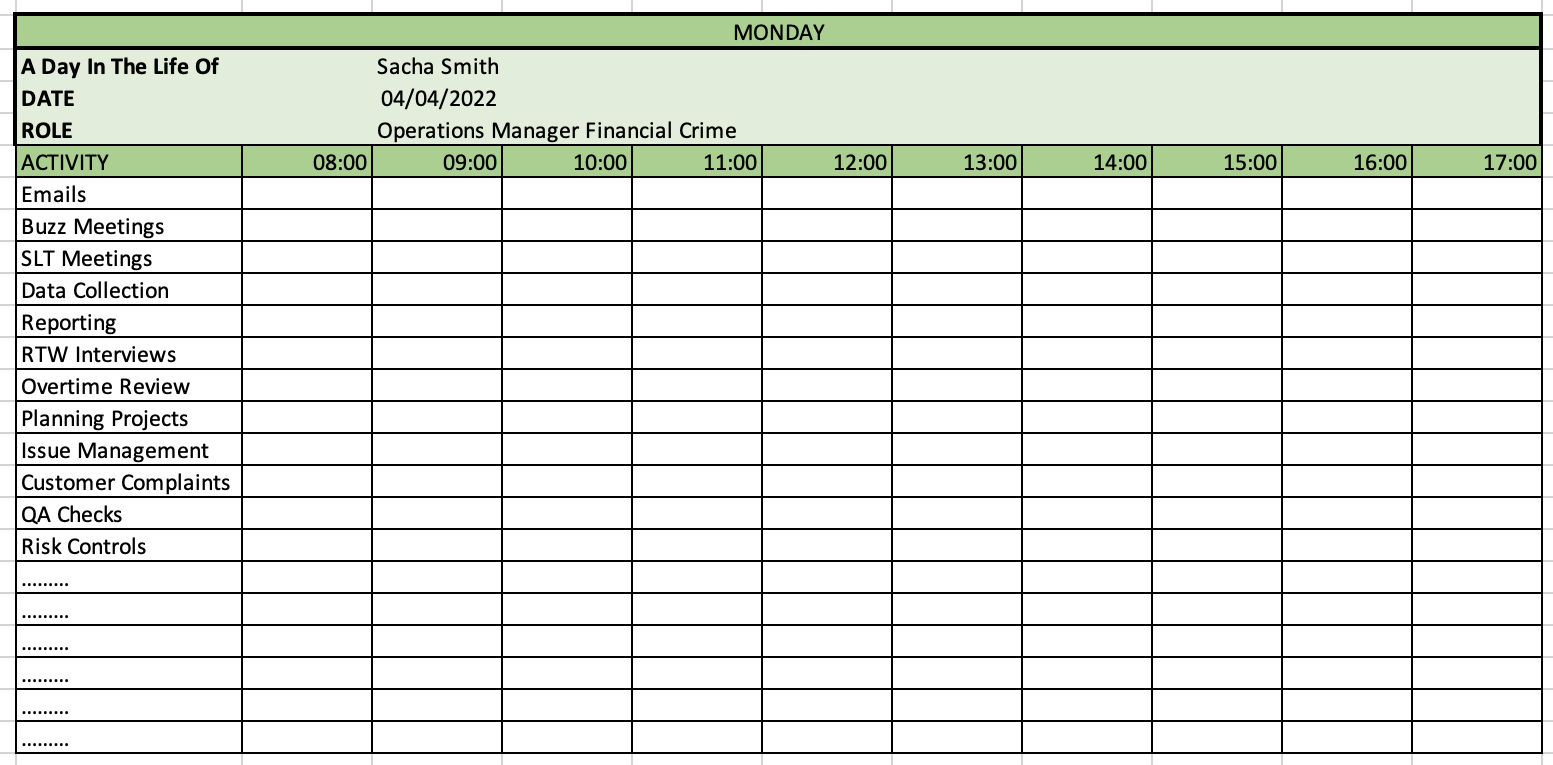
2: Create the Ideal Role
Using the current state data, participants create a ‘wish list’ of how they would ideally like to see their manager spending their time. This ideal state is driven by the departmental KPIs and the support staff need to achieve optimum performance in their role.
3: Analyse Activities
Activities are reviewed to understand if they are value-adding and central to the manager’s role:
☹️ Work that is not core to the manager’s role and any activities that do not directly impact performance should be removed.
😁 Core activities that directly and positively impact performance stay in the ideal future state
4: Create the ideal DILO
Ideally, this activity should be completed in a workshop setting with all participants.
Using the ideal task list, create an ideal standard day diary:
- Fill the diary with fixed schedule tasks and add a description
- Add all daily tasks with flexible schedule
- Combine all other weekly tasks
Consider infrequent tasks (bi-monthly, monthly)
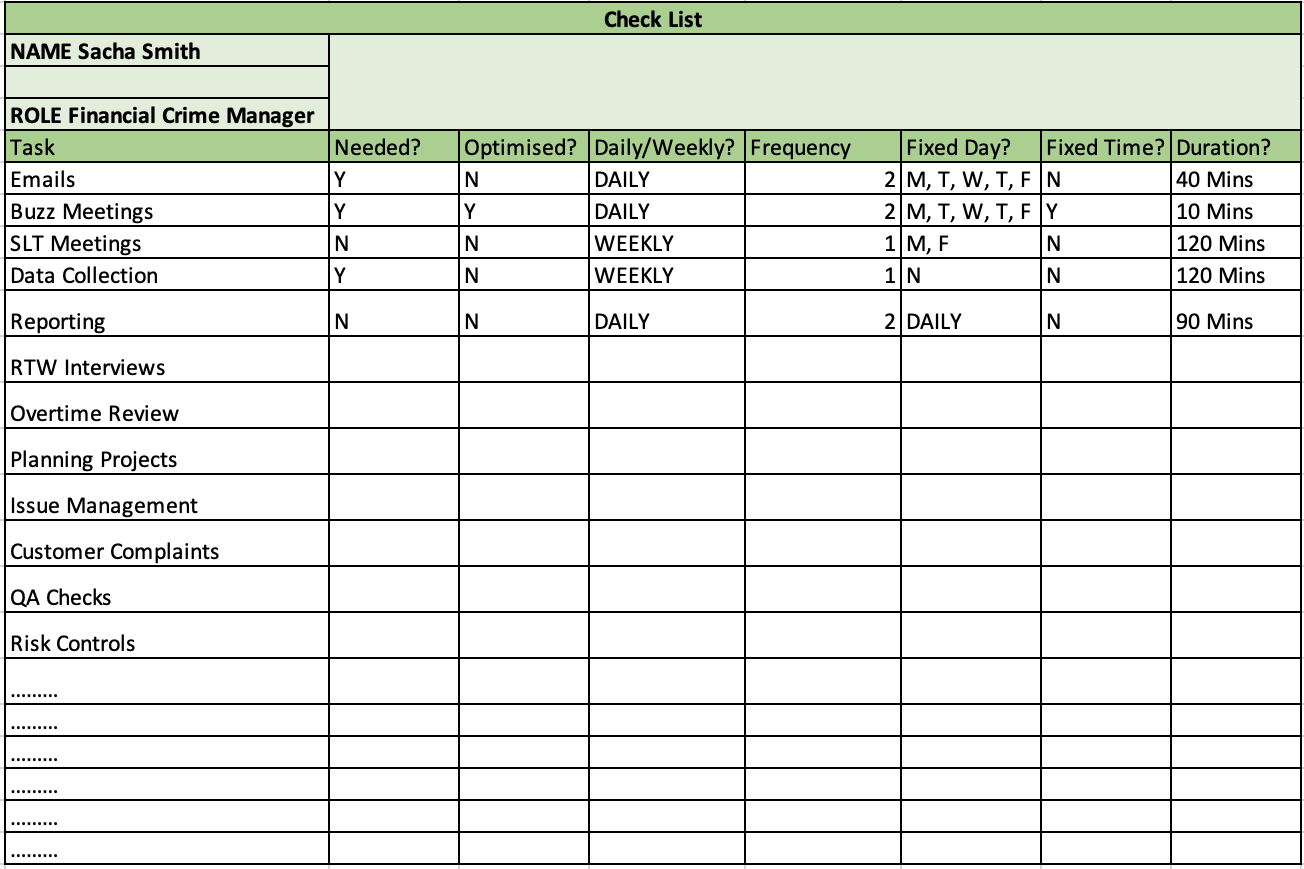
⚠️ Top Tip! Use a white board and dry marker as there will be lots of changes during the workshop!
Reduce the impact on daily work by applying load levelling to weekly/monthly tasks:
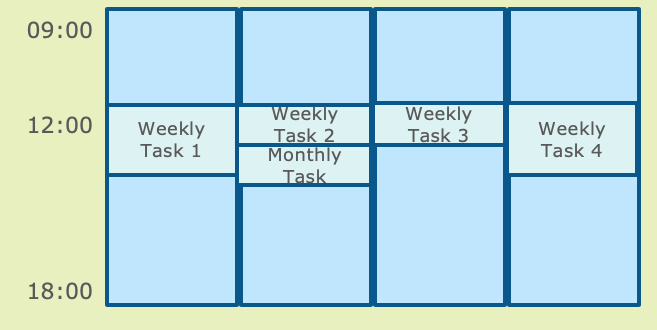
Once daily tasks have been added, begin to combine weekly and monthly activities. Where possible, combine weekly tasks so that same duration is spent on them every day and keep them at same time in the day to minimise the disruption of daily tasks.
For monthly tasks, try and have a fixed time on a fixed day each week. Combine them with the slot of the weekly tasks.
Ensure the standard day is still achievable and if required, remove any repetitive daily tasks that can be reduced.
5: Pivot and Refine
It is likely you will need to make adjustments as you begin to implement your ideal DILO. Existing restrictions may also require you to gradually amend the plan to ensure the DILO is achievable.
⚠️ Remember! Implementing DILO successfully takes time – be aware of where the non-value add activity exists so it can be managed as part of on-going Continuous Improvement.
In Summary
WILO/DILO is a documented diary of the ideal working day. It acts as a useful tool for better understanding how effective your work activities are and what people do as part of their everyday work routine. Using WILO/DILO will help ensure a manager’s core activities are focused on the right activities, identify inefficiencies and drive a Continuous Improvement culture.
What a leader does throughout their day is crucial to the effectiveness of a Lean working environment.
Want to know more? Get in touch with the ChangeWise team at info@changewise.co.uk
ChangeWise believes employee engagement is the foundation for successful Change. Training and coaching your people to use simple continuous improvement techniques will enable your organisation to continuously adapt and stay ahead in a constantly changing and challenging environment.
For updates and interesting Lean Change insights, connect with us on LinkedIn.

